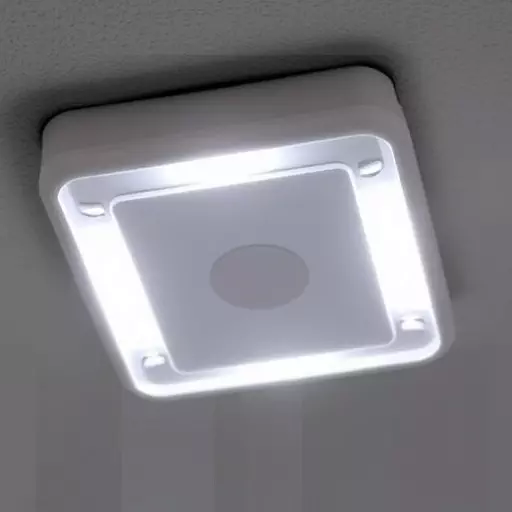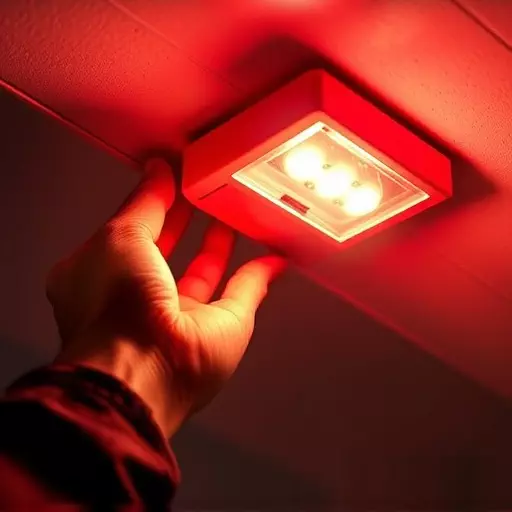Emergency Light Replacement: Jacksonville Guidelines for Government Safety
Government buildings in Jacksonville must adhere to strict emergency lighting requirements for publi…….
Introduction
In the bustling city of Jacksonville, Florida, the safety and well-being of its residents are paramount. A critical component of this safety net is the Emergency Light Replacement system, a network designed to illuminate public spaces, ensure compliance with safety regulations, and provide unwavering guidance in times of crisis. This comprehensive article will delve into the multifaceted aspects of “Emergency Light Replacement Jacksonville,” from its historical context and significance to the economic impact, technological advancements, policy frameworks, and future prospects. Readers will gain a deep understanding of how this system operates, its importance in various settings, and the broader implications for the city’s safety and infrastructure.
Understanding Emergency Light Replacement Jacksonville
Emergency Light Replacement Jacksonville refers to the process and systems in place to maintain and upgrade emergency lighting fixtures throughout the city. These lights are strategically positioned in public areas, critical infrastructure, and transportation hubs to provide illumination during power outages, natural disasters, or emergencies. The core components of this system include the lighting units themselves, the control systems that manage their operation, and the maintenance protocols that ensure their reliability. Historically, emergency lighting has evolved from simple battery-powered lamps to sophisticated LED systems capable of withstanding harsh conditions.
Global Impact and Trends
The concept of Emergency Light Replacement is not isolated to Jacksonville; it is a global concern with varying implementations across different regions. Trends in this sector are influenced by factors such as technological advancements, urbanization rates, and changes in regulatory standards. In densely populated cities like New York or London, the demand for robust emergency lighting systems is high, necessitating innovative solutions to meet the unique challenges of these environments. Conversely, in rural areas, the focus may be on cost-effective, sustainable options that can operate with minimal maintenance.
Economic Considerations
The economic landscape of Emergency Light Replacement Jacksonville encompasses market dynamics and investment patterns at both local and international levels. The initial setup costs, operational expenses, and long-term savings are critical considerations for municipal budgets. Economic analyses reveal that the investment in such systems not only ensures public safety but also promotes economic vitality by enabling businesses to operate continuously, thereby contributing to job creation and sustained economic growth.
Technological Advancements
Technological advancements have revolutionized emergency lighting systems. The transition from high-intensity discharge (HID) lamps to light-emitting diodes (LEDs) has significantly improved efficiency, longevity, and performance. Smart technologies now enable these systems to be remotely monitored and managed, providing real-time data on their status and optimizing their operation based on usage patterns or environmental conditions. The future holds promise for even more advanced solutions, such as self-sustaining photovoltaic cells and adaptive lighting that adjusts brightness according to ambient light levels.
Policy and Regulation
A comprehensive set of policies and regulations governs Emergency Light Replacement Jacksonville. These include the National Electrical Code (NEC), Americans with Disabilities Act (ADA) standards, and local ordinances that dictate the placement, operation, and maintenance requirements for emergency lighting systems. Compliance with these regulations is not only a legal obligation but also a critical step in ensuring public safety and system effectiveness.
Challenges and Criticisms
Despite its importance, Emergency Light Replacement Jacksonville faces several challenges and criticisms. Issues such as budget constraints, technological compatibility, and the integration of new systems with existing infrastructure can pose significant hurdles. Critics often highlight the need for more sustainable and cost-effective solutions, while advocates push for stricter regulations to ensure optimal performance during emergencies. Strategies to overcome these issues include adopting scalable technologies, fostering public-private partnerships, and investing in regular system assessments and maintenance.
Case Studies
Several case studies from across the country illustrate the successful implementation of Emergency Light Replacement systems. One notable example is the city of Chicago’s comprehensive overhaul of its emergency lighting infrastructure, which significantly improved reliability and reduced operational costs. Another is the small town of Riverhead, New York, which leveraged a grant to upgrade its streetlights to LED technology, enhancing both energy efficiency and safety. These case studies offer valuable insights into best practices and the potential benefits of well-maintained emergency lighting systems.
Future Prospects
The future of Emergency Light Replacement Jacksonville is poised for growth and innovation. With advancements in smart city technologies and increasing awareness of the importance of public safety, we can expect to see more sophisticated and responsive systems. The integration of artificial intelligence (AI) and machine learning could lead to predictive maintenance capabilities, further reducing downtime and improving efficiency. Additionally, the push towards sustainability will likely influence the types of technologies adopted, with a focus on renewable energy sources and energy storage solutions.
Conclusion
In conclusion, Emergency Light Replacement Jacksonville is a critical component of the city’s infrastructure, serving as a lifeline during emergencies and ensuring public safety. The multifaceted aspects covered in this article underscore the system’s importance and the necessity for ongoing investment, innovation, and adherence to regulations. As cities evolve and technology advances, the role of emergency lighting systems will only become more prominent, reinforcing their significance in our daily lives and during critical moments.
FAQ Section
Q: How often should emergency lighting systems be inspected?
A: Emergency lighting systems should be inspected and tested monthly to ensure they are operational and annually by a qualified electrician to verify compliance with relevant codes and standards.
Q: What are some common technologies used in modern emergency lighting systems?
A: Modern emergency lighting systems commonly use LED technology due to its energy efficiency, longevity, and rapid response times. Additionally, they may incorporate smart sensors and communication systems for monitoring and control.
Q: Can emergency lighting systems be powered by renewable energy sources?
A: Yes, emerging technologies allow for the integration of renewable energy sources such as solar panels into emergency lighting systems, providing an alternative power source that can maintain operation during outages or emergencies.
Q: How does the National Electrical Code (NEC) impact Emergency Light Replacement Jacksonville?
A: The NEC provides guidelines and standards for the installation and maintenance of electrical systems, including emergency lighting. Adherence to these codes ensures that systems are safe, reliable, and effective in providing illumination during emergencies.
Q: What is the role of public-private partnerships in Emergency Light Replacement Jacksonville?
A: Public-private partnerships can leverage the strengths of both sectors to fund, develop, and maintain emergency lighting systems. These partnerships can provide access to advanced technologies and resources while ensuring that the systems meet public safety needs.

Government buildings in Jacksonville must adhere to strict emergency lighting requirements for publi…….

Reliable emergency lighting is vital for data center safety in Jacksonville. Regular inspections and…….

Understanding emergency light failure modes in Jacksonville is crucial for effective maintenance and…….

In Jacksonville, regular maintenance and timely replacements of emergency lights are crucial for saf…….

In Jacksonville, regular emergency light replacement (every 5-7 years or sooner if malfunctioning) i…….

Business owners in Jacksonville must prioritize emergency light replacement services to comply with…….

Understanding common failure modes of emergency lights, such as burnt-out bulbs, faulty wiring, and…….

Emergency light replacement in Jacksonville is crucial for safety and efficiency, especially in comm…….

Reliable emergency lighting is crucial for student and staff safety in Jacksonville schools. Common…….

Reliable emergency lighting is critical in warehouses for worker safety. Regularly review and adhere…….